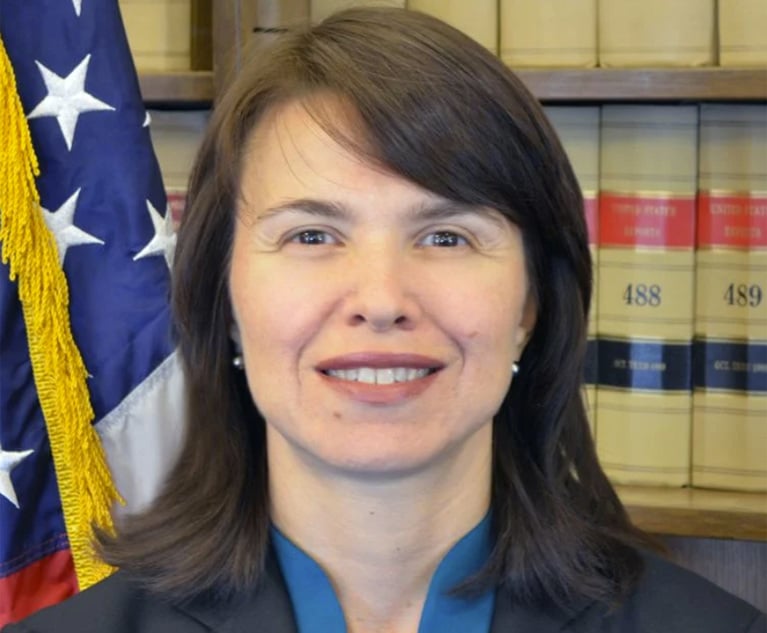 L-R:Gregory R. Bruno, Alfred W.J. Marks and Emma K. Pletenycky of Day Pitney. Courtesy photos
L-R:Gregory R. Bruno, Alfred W.J. Marks and Emma K. Pletenycky of Day Pitney. Courtesy photosClass Gifts and NY’s 'Adoption Out' Statute: Guidance for NY Fiduciaries on Minimizing Litigation Risks
Should the fiduciary permit those individuals to share in the class gift? Missteps in this decision can, and often do, lead to the assertion of claims against the fiduciary followed by costly, protracted litigation. This article aims to assist fiduciaries of New York trusts and estates in navigating this dilemma while minimizing the risk of litigation.
December 13, 2024 at 09:00 AM
8 minute read
Class gifts to “issue” (or “descendants”) are common in wills and trusts. Identifying the members of this class is ordinarily a straightforward task for the fiduciary charged with administering the gift. Under Section 1-2.10 of the Estates, Powers and Trusts Law (EPTL), “issue” is defined simply as “the descendants in any degree from a common ancestor.” The statute even specifies that the term includes adopted children. But the question becomes more complex when individuals are adopted-out of the settlor or testator’s biological family. Should the fiduciary permit those individuals to share in the class gift? Missteps in this decision can, and often do, lead to the assertion of claims against the fiduciary followed by costly, protracted litigation. This article aims to assist fiduciaries of New York trusts and estates in navigating this dilemma while minimizing the risk of litigation.
To understand how best to approach this issue, we look first to the evolution of New York law governing the inheritance rights of adopted children. From 1896 to 1963, adopted children retained their right under New York law to inherit from and through their biological families, even after having been adopted-out. See Matter of Piel, 10 N.Y.3d 163, 167 (2008) (quoting Domestic Relations Law Section 64). In 1963, the Legislature amended Domestic Relations Law (DRL) Section 117 to terminate an adopted child’s inheritance rights from their biological family. Id. However, the amendment clarified that the termination of rights applied “only to the intestate descent and distribution of real and personal property and shall not affect the right of any child to distribution of property under the will ... or under any inter vivos instrument ... executed by such natural parent or his or her kindred.” Thus, left unresolved was whether an adopted-out child could still inherit as a member of a class gift made by a biological ancestor.
NOT FOR REPRINT
© 2025 ALM Global, LLC, All Rights Reserved. Request academic re-use from www.copyright.com. All other uses, submit a request to [email protected]. For more information visit Asset & Logo Licensing.
You Might Like
View All

NASDAQ Beats Back Investor Claims of Bias Against Minority-Owned Businesses
3 minute read
‘Issue of First Impression’: New York Judge Clears Coinbase Appeal Amid Crypto Regulatory Clash
4 minute read
Splits Among the Departments: What Might Be Ripe for the Court of Appeals
8 minute readTrending Stories
Who Got The Work
J. Brugh Lower of Gibbons has entered an appearance for industrial equipment supplier Devco Corporation in a pending trademark infringement lawsuit. The suit, accusing the defendant of selling knock-off Graco products, was filed Dec. 18 in New Jersey District Court by Rivkin Radler on behalf of Graco Inc. and Graco Minnesota. The case, assigned to U.S. District Judge Zahid N. Quraishi, is 3:24-cv-11294, Graco Inc. et al v. Devco Corporation.
Who Got The Work
Rebecca Maller-Stein and Kent A. Yalowitz of Arnold & Porter Kaye Scholer have entered their appearances for Hanaco Venture Capital and its executives, Lior Prosor and David Frankel, in a pending securities lawsuit. The action, filed on Dec. 24 in New York Southern District Court by Zell, Aron & Co. on behalf of Goldeneye Advisors, accuses the defendants of negligently and fraudulently managing the plaintiff's $1 million investment. The case, assigned to U.S. District Judge Vernon S. Broderick, is 1:24-cv-09918, Goldeneye Advisors, LLC v. Hanaco Venture Capital, Ltd. et al.
Who Got The Work
Attorneys from A&O Shearman has stepped in as defense counsel for Toronto-Dominion Bank and other defendants in a pending securities class action. The suit, filed Dec. 11 in New York Southern District Court by Bleichmar Fonti & Auld, accuses the defendants of concealing the bank's 'pervasive' deficiencies in regards to its compliance with the Bank Secrecy Act and the quality of its anti-money laundering controls. The case, assigned to U.S. District Judge Arun Subramanian, is 1:24-cv-09445, Gonzalez v. The Toronto-Dominion Bank et al.
Who Got The Work
Crown Castle International, a Pennsylvania company providing shared communications infrastructure, has turned to Luke D. Wolf of Gordon Rees Scully Mansukhani to fend off a pending breach-of-contract lawsuit. The court action, filed Nov. 25 in Michigan Eastern District Court by Hooper Hathaway PC on behalf of The Town Residences LLC, accuses Crown Castle of failing to transfer approximately $30,000 in utility payments from T-Mobile in breach of a roof-top lease and assignment agreement. The case, assigned to U.S. District Judge Susan K. Declercq, is 2:24-cv-13131, The Town Residences LLC v. T-Mobile US, Inc. et al.
Who Got The Work
Wilfred P. Coronato and Daniel M. Schwartz of McCarter & English have stepped in as defense counsel to Electrolux Home Products Inc. in a pending product liability lawsuit. The court action, filed Nov. 26 in New York Eastern District Court by Poulos Lopiccolo PC and Nagel Rice LLP on behalf of David Stern, alleges that the defendant's refrigerators’ drawers and shelving repeatedly break and fall apart within months after purchase. The case, assigned to U.S. District Judge Joan M. Azrack, is 2:24-cv-08204, Stern v. Electrolux Home Products, Inc.
Featured Firms
Law Offices of Gary Martin Hays & Associates, P.C.
(470) 294-1674
Law Offices of Mark E. Salomone
(857) 444-6468
Smith & Hassler
(713) 739-1250






